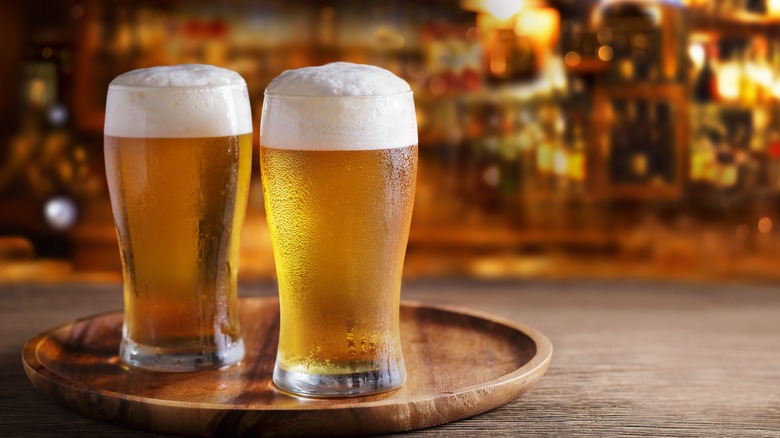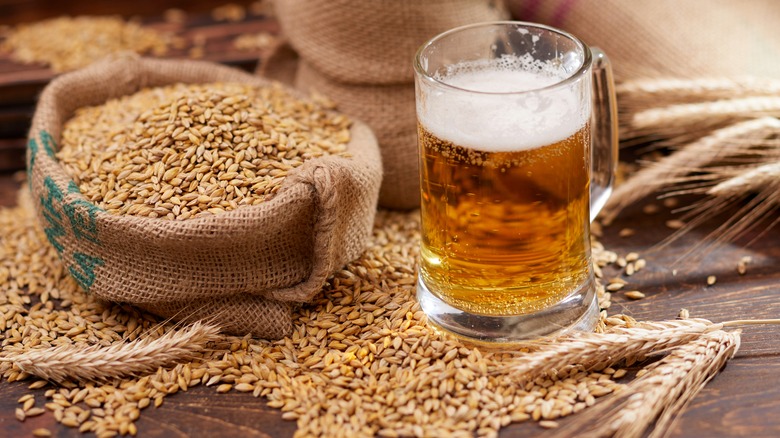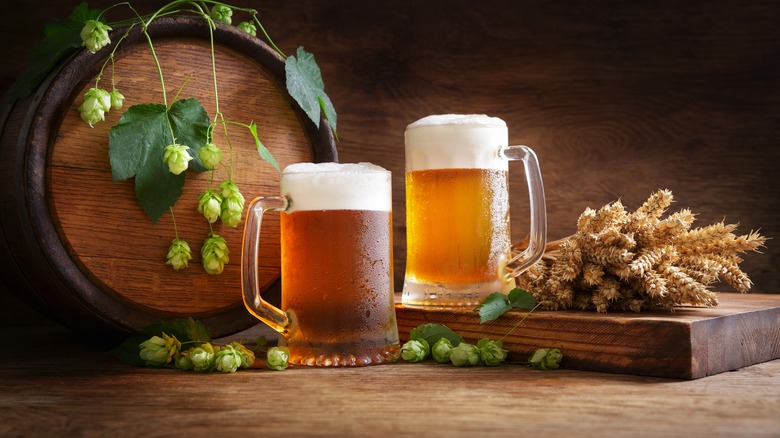The 1500s Guidelines That Still Dictate Beer Ingredients Today
We've come a long way from the 1500s. We have indoor plumbing, electricity, Internet, cars, planes, the list goes on. But to say that our ancestors didn't enjoy the same things we did wouldn't be true. These people had friends and loved ones, they went to church and work, and they lived lives that although seem humble to us were nonetheless fulfilling and human. In fact, one of the things our ancestors enjoyed was beer.
Although beer had been around for quite a long time even before the 1500s (with the Ancient Egyptians having enjoyed more than their fair share of the stuff), beer had gained incredible popularity in Europe, becoming a very popular drink of all walks of life. Perhaps no country in Europe, however, is more closely associated with beer than Germany. While the idea of beer and Germans brings to mind such things like Oktoberfest and lederhosen, German culture of the time took brewing beer very seriously. So serious were the Germans about brewing their beer that something known as the "Reinheitsgebot," or "purity laws," were passed in 1516. These laws were drafted to benefit both the brewers and the people alike, ensuring that every mug of beer produced would follow strict guidelines and meet certain criteria to be considered drinkable.
But what exactly was this law? What were the criteria that beer needed to meet in order to be considered pure? Why even make such laws to begin with?
The Purity Law meant that only four ingredients could be used
Much like the modern-day laws that regulate our drinking water, the German Purity Law of 1516 is one of the first modern laws regarding food and drink. In order to ensure that beer was "pure," or would be considered good enough to drink, the Purity Law meant that only four ingredients were to be used in the production and brewing of the drink.
These four ingredients were water, hops, malt, and yeast– in fact, those ingredients are still considered to be the four main pillars of a good beer even today. In any beer you find, whether it's a twelve-pack of Yuengling or a fancy imported beer from Northern Germany, you'll note these four ingredients displayed on the label. At first, the reason for the passing of the Purity Law, aside from ensuring the production of drinkable beer, was to prevent crops usually grown for bread from being used for brewing. The only ingredients included in the first draft of the Purity Law were water, hops, and malt. Yeast was added later on, although many brewers at the time still used it in their brewing process. It was only when yeast was officially recognized as a brewing agent that it became part of the four main ingredients.
Although the Law was passed at first to limit what could go into beer, the importance of beer being pure played more of a key role in society than you may expect.
Beer was seen as healthier than water
Nowadays, most medical professionals will tell you that it's not good to substitute your recommended intake of water for beer. While this may be true today, the drinking habits of the folks living in the 1500s would tell a different story. Beer was, believe it or not, considered safer to drink than water– or was it?
Of course, people couldn't live on mugs of beer or ale alone. Yet a popular myth goes that people relied heavily on beer to stay hydrated, as the water during that time was widely unclean and unfit to drink without risking illness. While it is true that the people of the Middle Ages didn't enjoy the modern practices of water purification we have today, it's also true that water was still a very popular and refreshing drink. Villagers in the 1500s would know if the water was clean or not– they certainly wouldn't be drinking from dirty rivers or mud puddles.
But, for what it's worth, beer was actually seen as a more nutritional alternative to water by way of the grains in it. Beer not only had nutrients, but calories as well, which made it very popular with field workers. Besides, since water was a key staple in the production of beer, it would only make sense that pure, clean water would be used to brew it. Beer was still popular no doubt, but water was still equally as popular and safe.


